There’s something genuinely rewarding about growing your own food. Among the myriad of vegetables and fruits one can plant, tomatoes often stand out as a gardener’s favorite. Not only are they versatile in the kitchen, but they also have an unparalleled freshness when plucked right from your garden.
In this article, I’ll share with you the many benefits of growing tomatoes, some of my top tomato varieties, and of course, invaluable tips on caring for these red gems.
Benefits of Growing Tomatoes
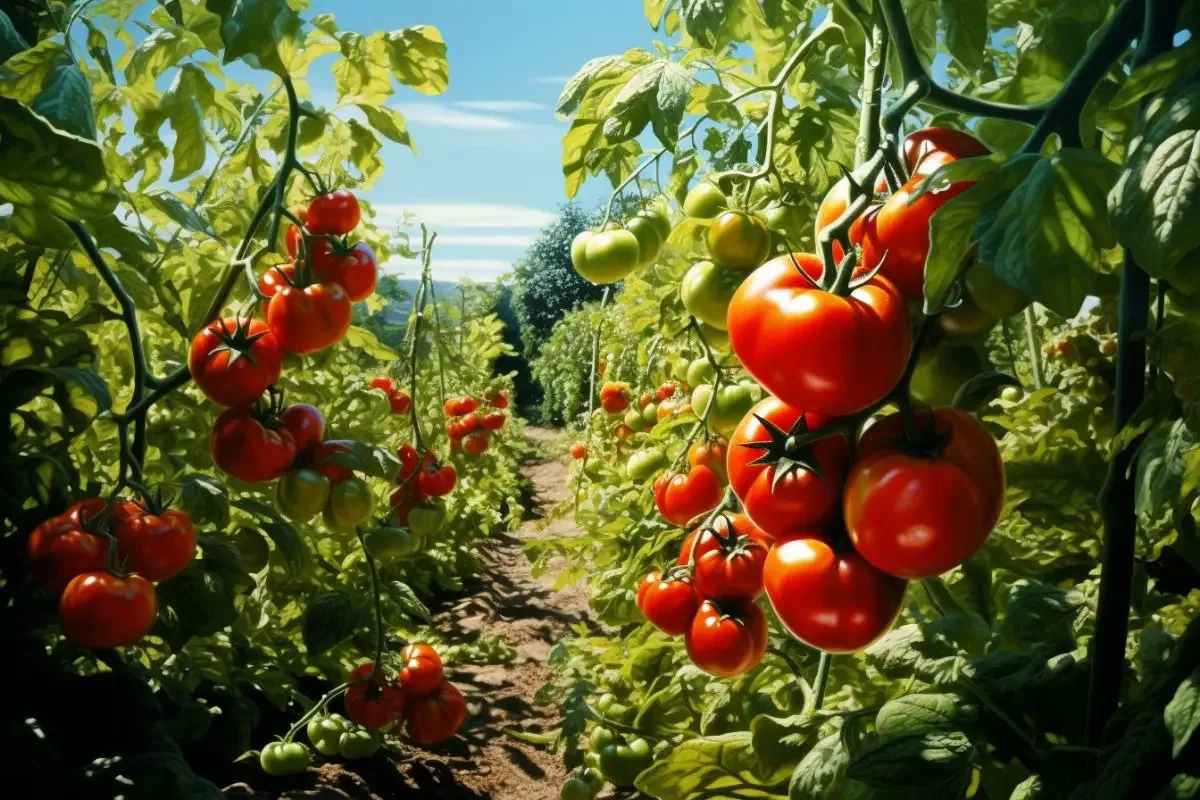
1. Flavor Like No Other
One of the most undeniable benefits of growing your own tomatoes is the flavor. Trust me, once you’ve tasted a sun-warmed tomato fresh off the vine, store-bought ones just won’t compare. Homegrown tomatoes have a deep, rich flavor, full of juiciness, and the perfect balance of sweetness and acidity.
2. Rich in Nutrients
Tomatoes are packed with vitamins, especially Vitamin C and potassium. By growing your own, you ensure that no harmful chemicals or pesticides interfere with the nutrient profile of these fruits. Plus, the mere act of gardening itself is a therapeutic and healthful activity, promoting physical and mental well-being.
3. Environmentally Friendly
Let’s not forget the eco-friendly aspect! Growing your own tomatoes means reducing the need for commercially grown tomatoes, which often involve transportation across long distances, excessive use of water, and harmful pesticides. By nurturing your own tomato plants, you’re making a conscious choice to reduce your carbon footprint.
My Favorite Tomato Varieties
Ah, the varieties! One of the joys of gardening is experimenting with different types of tomatoes. Over the years, I’ve had my share of trials and errors, but here are three that I swear by:
1. Cherry Tomatoes – ‘Sungold’
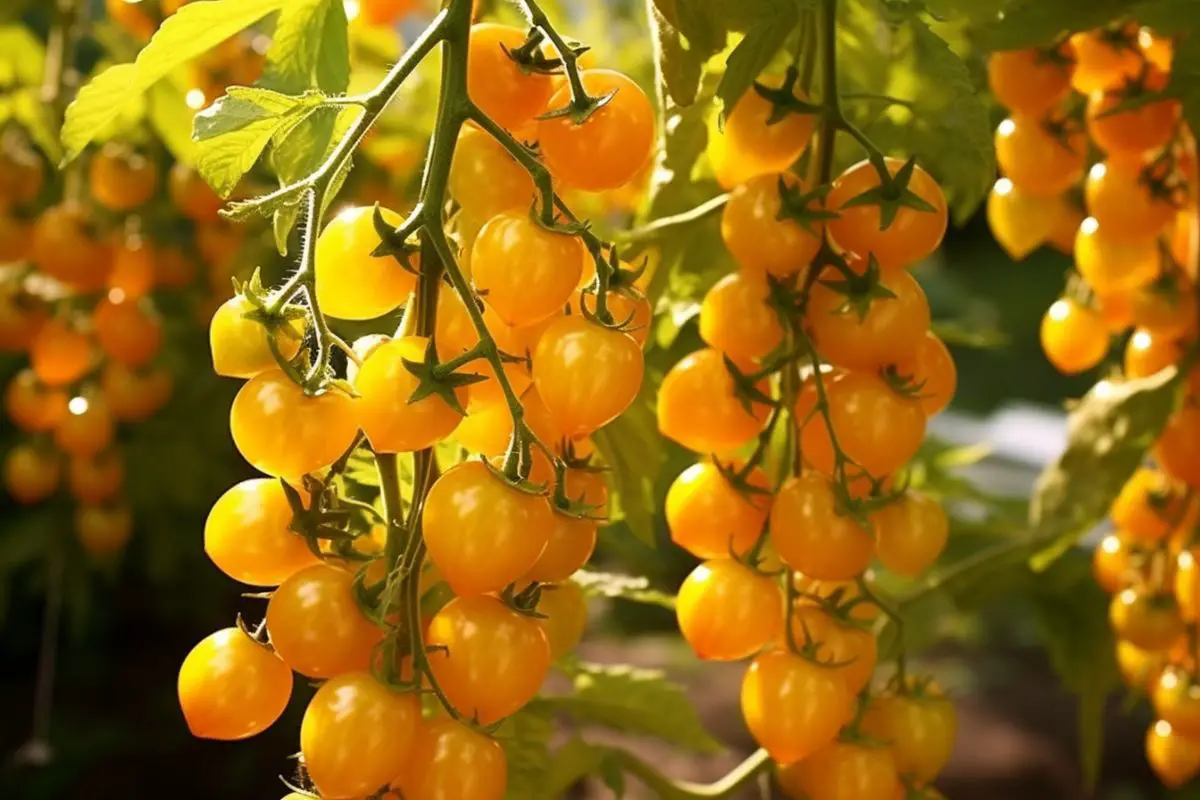
These little golden delights are my absolute favorites. ‘Sungold’ is a variety of cherry tomato that’s incredibly sweet and has a tropical fruitiness to it. It’s perfect for salads or just popping them straight into your mouth as a delightful snack.
2. Heirloom Tomatoes – ‘Brandywine’
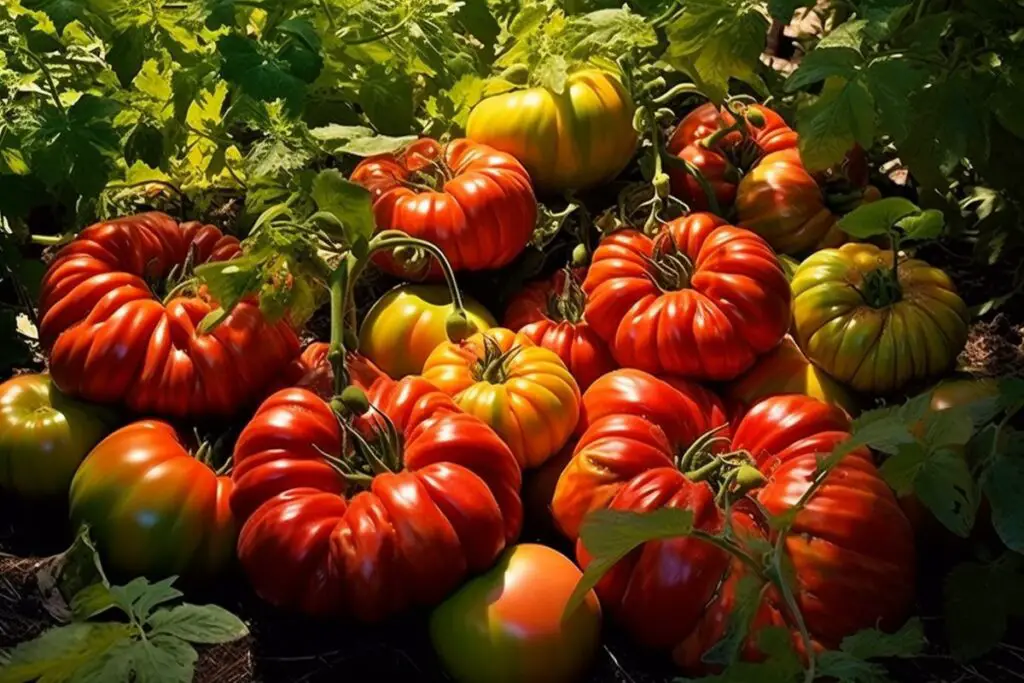
For those who love a meaty, large tomato perfect for sandwiches or a classic Caprese salad, the ‘Brandywine’ is a must-try. It has an old-world flavor that’s rich and succulent. And let’s not forget its beautiful pinkish-red hue which makes it a showstopper in any garden.
3. Roma Tomatoes
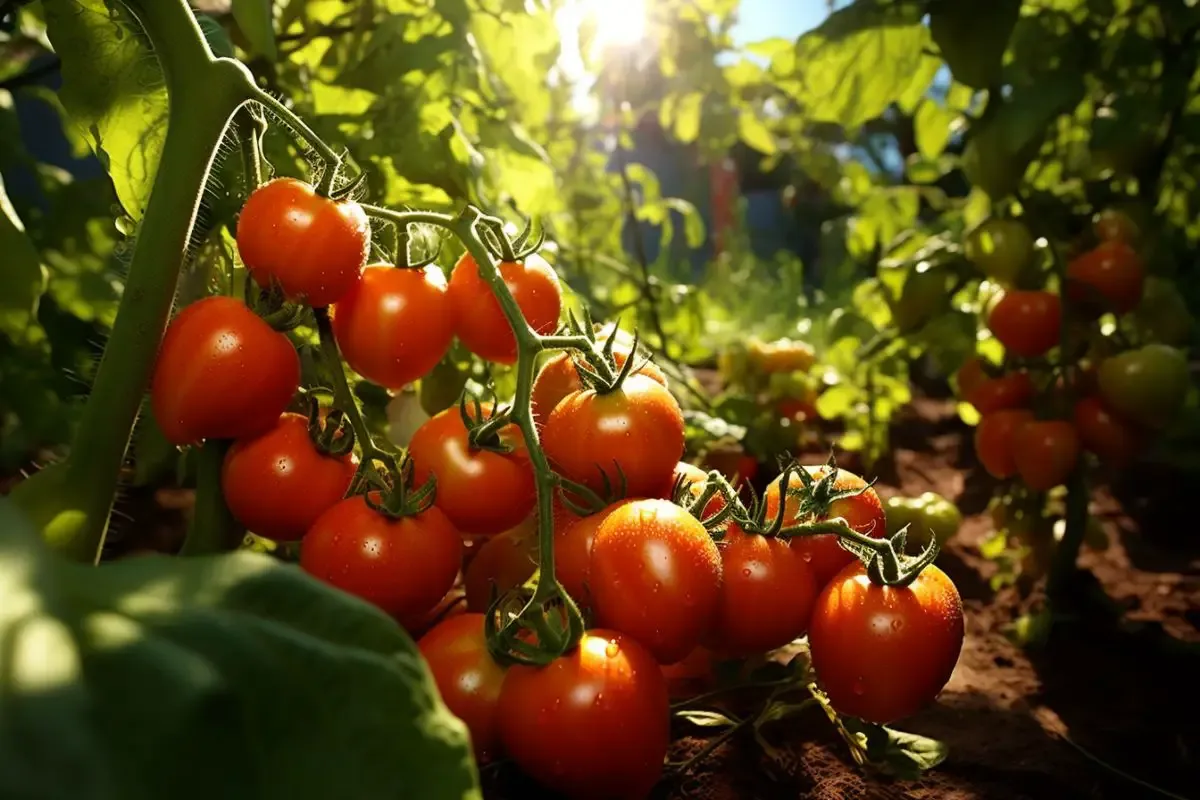
When it comes to making sauces, salsas, or any tomato-based dish, Romas are my go-to. They have a dense flesh with fewer seeds, making them ideal for cooking. Plus, their elongated shape and vibrant red color are simply a treat to the eyes.
Tomato Care
Tomatoes, like all plants, require some TLC to ensure they grow strong and produce a bountiful harvest. From planting to ensuring they get the right amount of light, let’s delve into the essential care tips every tomato gardener should know.
Planting
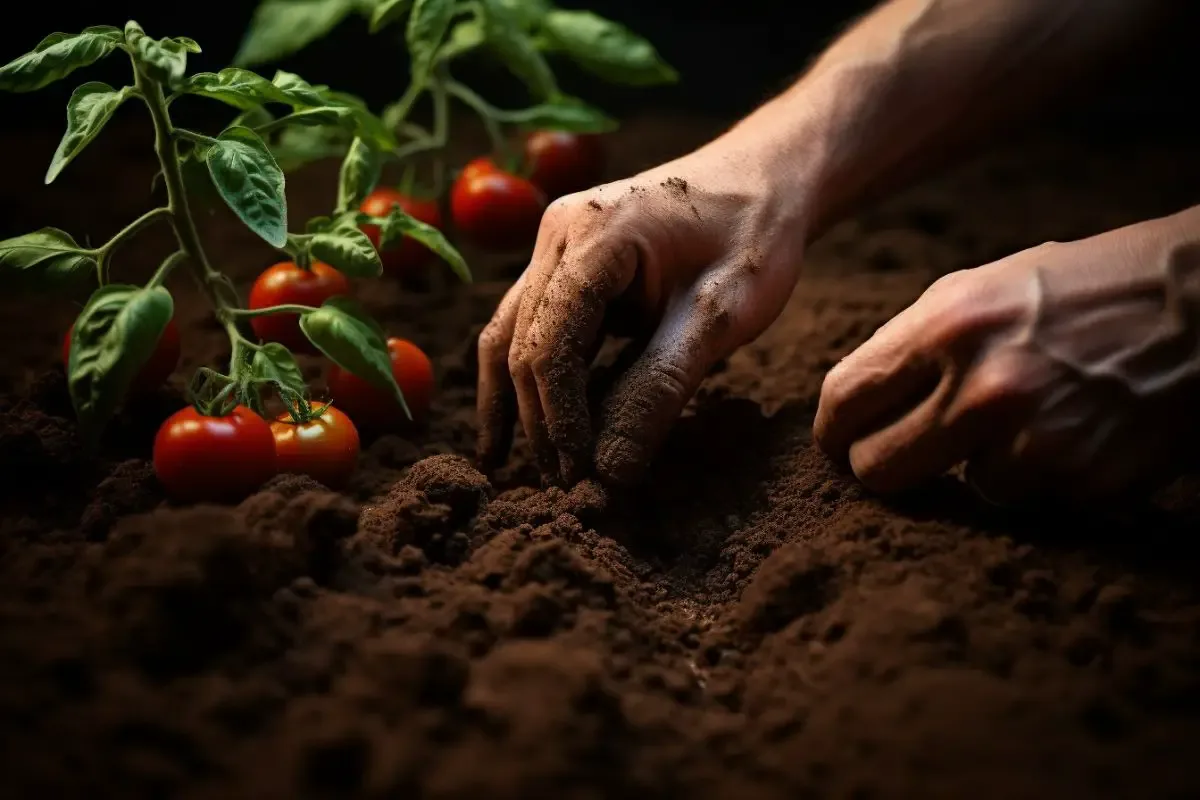
Start Indoors: Most gardeners prefer starting tomato seeds indoors about 6-8 weeks before the last frost date. This gives them a head start and ensures a longer harvesting period. Use a good quality seed starting mix in small pots or seed trays. Once the seedlings have grown two sets of true leaves, they can be transplanted into larger pots.
Hardening Off: Before moving your tomato plants outdoors, they need to be acclimatized to outdoor conditions. This process, known as hardening off, involves placing the plants outside for a few hours each day, gradually increasing the time over a week or so.
Planting Outdoors: When it’s time to plant your tomatoes in the garden, choose a spot that receives ample sunlight. Dig a deep hole and add some compost to it. Plant the tomatoes deeper than they were in the pots; new roots will sprout from the buried stem, giving you a sturdier plant.
Light
Tomatoes thrive in full sunlight. Ensure that your plants receive at least 6-8 hours of direct sunlight daily. If you’re growing tomatoes indoors or in a greenhouse, consider using grow lights during the shorter days to supplement the natural light.
Soil
Tomatoes prefer well-draining soil rich in organic matter. Before planting, it’s a good idea to enrich the soil with compost or aged manure. A soil pH level of 6.2 to 6.8 is ideal for tomatoes. If you’re unsure about your soil’s pH, consider getting a soil test kit from your local garden center.
Water
Consistency is the key when it comes to watering tomatoes. They prefer deep, infrequent waterings as opposed to shallow, frequent ones. This encourages the roots to grow deeper into the soil, making the plants more resilient during dry spells.
However, always ensure the soil remains moist and never completely dries out. Mulching around the base of the plants can help retain soil moisture and prevent diseases from splashing onto the leaves.
Temperature and Humidity
Tomatoes are warm-season plants. They prefer daytime temperatures between 70°F to 85°F and nighttime temperatures no lower than 55°F. If temperatures drop too low or soar too high, it can affect the fruit set.
Also, while tomatoes like some humidity, too much can lead to fungal diseases. Ensure good air circulation around your plants to mitigate this risk.
Fertilizer
Tomatoes are heavy feeders. Start by mixing a balanced, slow-release fertilizer into the soil at the time of planting. As the season progresses and once the first fruits are set, switch to a fertilizer higher in phosphorus and potassium. Liquid seaweed or compost tea are excellent organic options that I’ve found beneficial for my tomato plants.
Harvesting Tomatoes
Ah, the moment every gardener eagerly anticipates – harvesting! Tomatoes should be harvested when they are firm and fully colored. For most varieties, this means a vibrant red, but depending on the type, it could be yellow, orange, or even purple.
A Few Tips for the Perfect Harvest:
- Morning Harvest: Pick your tomatoes in the early morning when they’re at their juiciest.
- Don’t Wait Too Long: Overripe tomatoes might become soft, and their skin may split.
- Store at Room Temperature: Contrary to popular belief, tomatoes are best stored at room temperature. Refrigerating can reduce their flavor.
Pruning
Pruning can be a bit daunting, but it’s beneficial for producing better yields and healthier plants. The goal is to remove any unnecessary growth, allowing the plant to focus its energy on fruit production.
- Remove the Lower Leaves: The leaves near the base are the first to develop fungal diseases. It’s a good idea to remove them.
- Pinch Out Suckers: These are the little shoots that develop between the main stem and the branches. By pinching them off, you can direct the plant’s energy to the main growing tip.
Propagating
Propagating tomatoes is a straightforward and enjoyable part of gardening. Here’s a guide to help you expand your tomato patch with ease:
- Select Your Seeds: Choose from the many varieties available, each offering unique flavors and growth habits.
- Indoor Start: Begin by planting seeds indoors 6-8 weeks before the last frost date. This head start ensures a longer growing season.
- Soil and Containers: Use a high-quality seed starting mix in small pots or seed trays.
- Germination: Keep the soil moist and place the containers in a warm spot with good light. Watch for the thrill of the first sprouts!
- Take Cuttings: Snip off a 4-6-inch section of a healthy tomato plant. Choose a section with several leaf nodes.
- Rooting: Place the cuttings in water or a moist potting mix. Roots will begin to form in a week or two.
- Transplant: Once the roots are established, transplant the cuttings into pots or your garden.
How to Grow Tomatoes From Seed
Starting tomatoes from seed can be incredibly rewarding. Here’s how:
- Choose Quality Seeds: Invest in good-quality seeds; they make all the difference.
- Planting: About 6-8 weeks before the last frost, sow the seeds in a seed-starting mix. Place them about a quarter-inch deep.
- Provide Light: Once they germinate, ensure they get plenty of light. This prevents the seedlings from becoming leggy.
- Transplant: Once the seedlings have at least two sets of true leaves, they can be transplanted into bigger pots or directly into the garden if the temperatures are right.
Growing in Pots
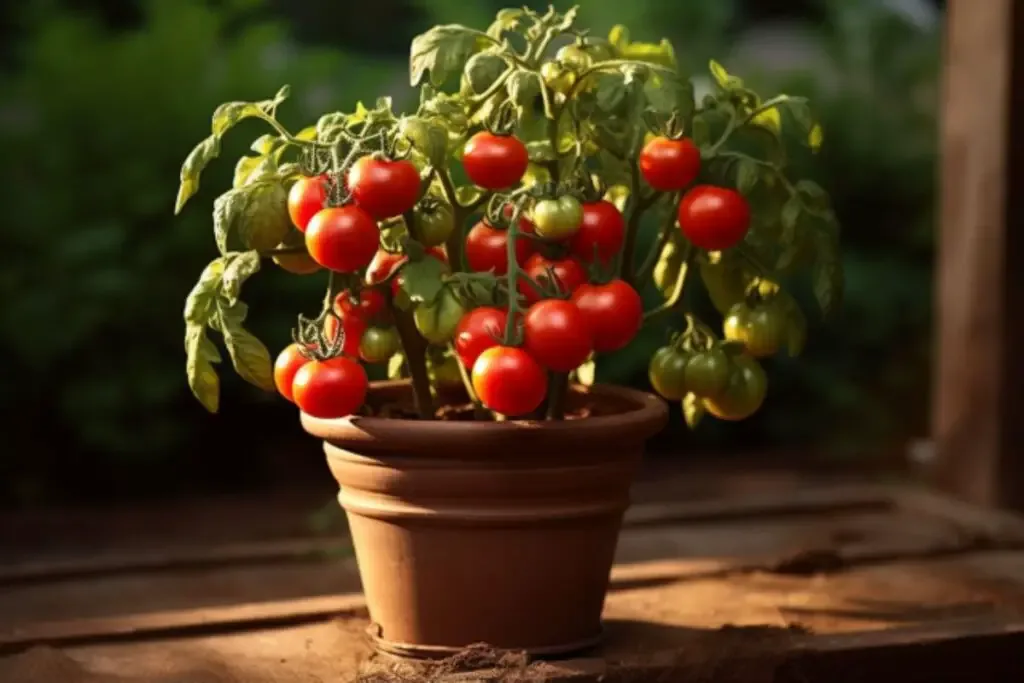
No garden space? No problem! Tomatoes grow wonderfully in pots.
- Choose the Right Container: A 5-gallon pot is ideal for one tomato plant. Ensure it has good drainage.
- Pick the Right Variety: While all tomatoes can grow in pots, determinate (bushy) varieties or specific patio varieties might be more manageable.
- Use Quality Soil: Invest in a good potting mix, preferably one that’s enriched with compost or well-rotted manure.
- Staking: Since tomatoes can get top-heavy, especially in pots, ensure they’re well-supported using stakes or cages.
Overwintering
Overwintering refers to the process of protecting plants from the cold winter months so they can thrive again in the spring. While most tomatoes are grown as annuals, did you know they can survive as perennials in frost-free zones? For those in colder regions, here’s how to give your beloved tomato plants a chance to see another season:
- Bring Them Inside: If you’ve been growing tomatoes in pots, consider bringing them indoors before the first frost. Place them in a sunny spot, like a south-facing window.
- Cut Back: Trim the plants back by about one-third. This reduces stress when adjusting to the indoor environment.
- Check for Pests: Before bringing any plant indoors, always inspect for pests. The last thing you want is an infestation inside your home!
Transplanting
Transplanting tomatoes can seem intimidating, but with a little know-how, it’s a breeze. Here’s the scoop:
- Harden Off First: Gradually expose your indoor-grown seedlings to the outdoor environment over a week. This helps them adjust and reduces transplant shock.
- Deep Planting is Key: Tomatoes root along their stems. So, when transplanting, bury up to 2/3 of the plant. This establishes a strong root system.
- Water Well: After transplanting, give them a good watering to settle the soil and help them adjust.
Common Pests & Diseases
Even with the best care, tomatoes can fall victim to pests and diseases. Knowledge is power, so here are some common culprits:
- Tomato Hornworm: These green caterpillars munch on leaves, causing significant damage. Handpick them off or introduce beneficial insects like ladybugs.
- Aphids: Tiny bugs that suck the sap from tomato plants. A strong water spray or neem oil can help manage them.
- Blight: This fungal disease can be a gardener’s nightmare. It appears as dark spots on the leaves. Prevention includes rotating crops, pruning lower leaves, and ensuring good air circulation.
- Blossom End Rot: Not a disease but a calcium imbalance. It manifests as a dark, sunken spot on the tomato’s bottom. Ensure even watering and consider adding lime to the soil.
Always remember, that a proactive approach is best. Regularly inspect your plants, keep the area clean, and ensure good air circulation to prevent many of these issues. And as always, the joy of gardening comes not just from the harvest but from the journey. Embrace the challenges as learning experiences!

